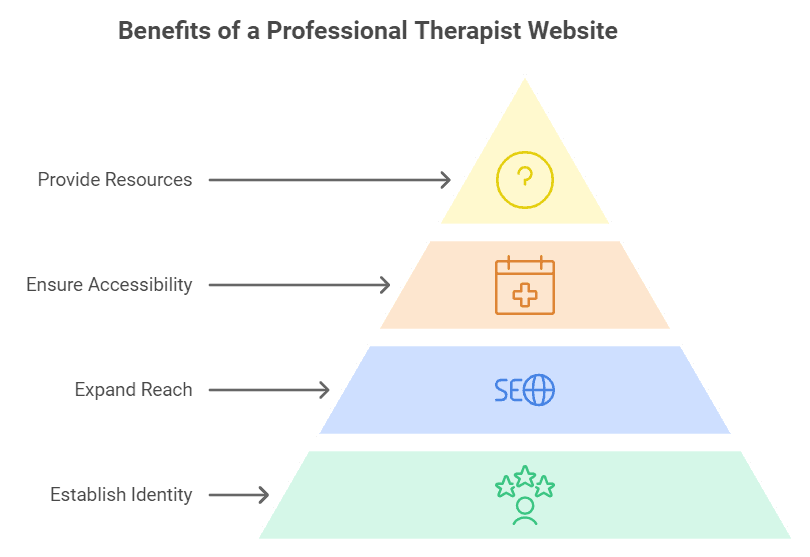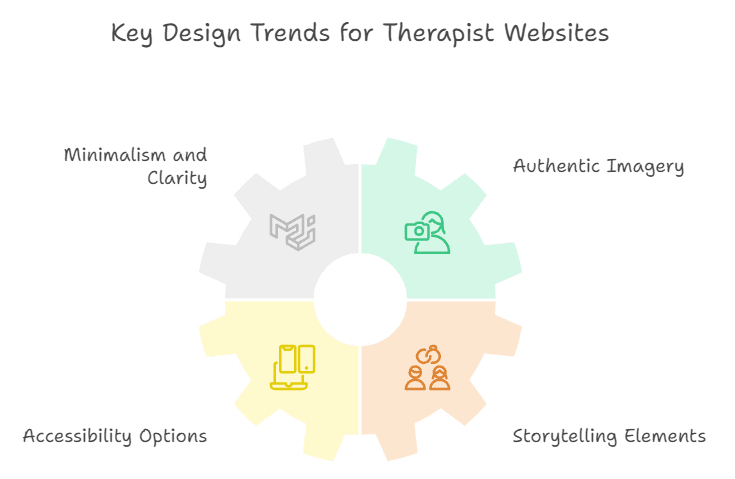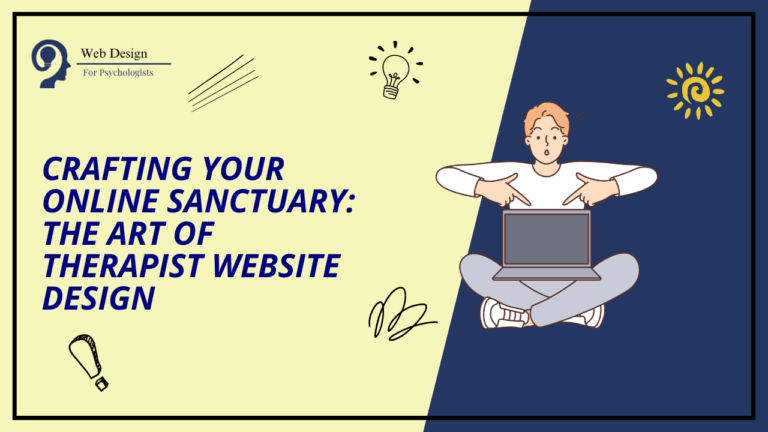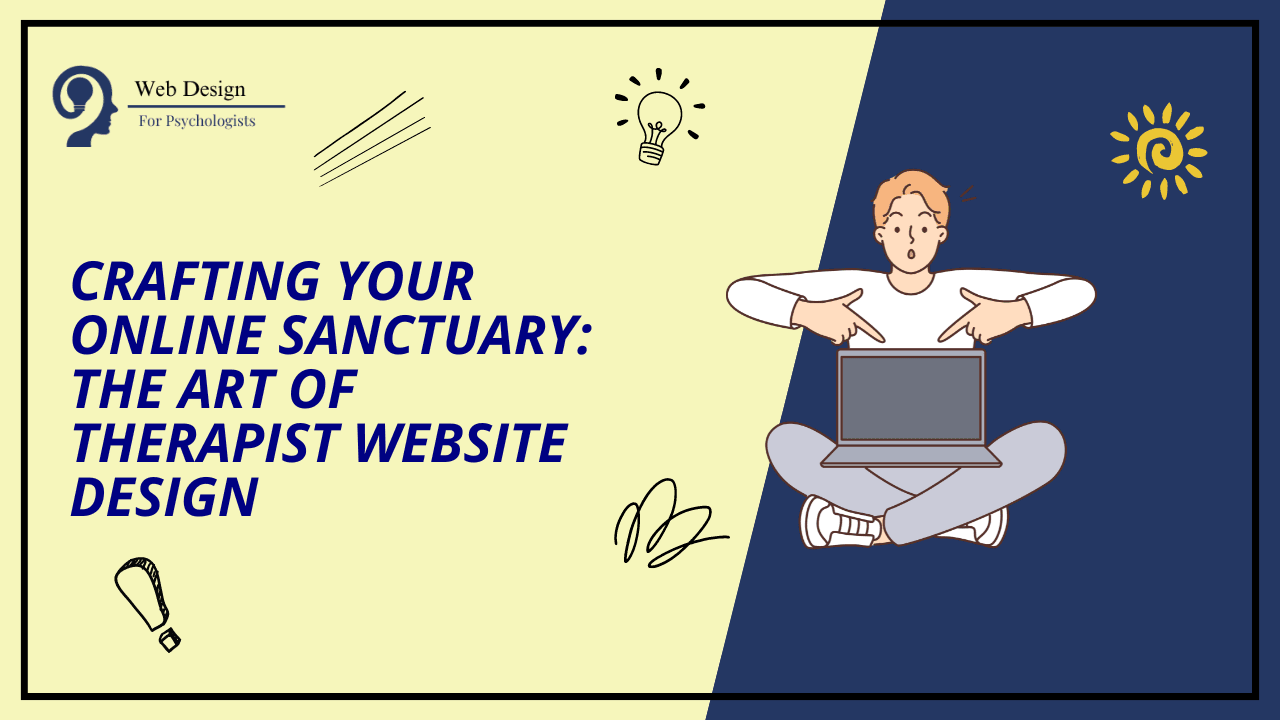In the realm of digital landscapes, a therapist’s website is more than a mere online presence. It’s a sanctuary where meaningful connections begin, a testament to your professional expertise, and an invitation to those seeking guidance in their life’s journey. Therapist Website Design is the beacon that guides potential clients to your virtual doorstep, promising solace and expertise in times of need. In this comprehensive guide, we’ll explore the transformative Benefits of a Professional Therapist Website, the Key Features for Therapist Websites, and ongoing Therapist Website Design Trends that encapsulate the heart of successful digital therapy practice.
Benefits of a Professional Therapist Website:
- Establish Your Professional Identity:
First and foremost, a professional therapist website serves as the foundation for your digital identity. It tells your story, conveys your therapeutic philosophy, and showcases your credentials, allowing clients to grasp who you are before they ever set foot in your office. In an age where the first client-therapist interaction is likely to occur online, a well-designed website impacts how your practice is perceived. - Expand Your Reach:
Beyond local boundaries, your digital presence breaks down barriers, connecting you with individuals far and wide who may benefit from your expertise. This global reach empowers you to assist a more extensive array of clients, ultimately magnifying your impact and growing your practice. - Ensure Accessibility and Convenience:
In today’s fast-paced world, a website that’s accessible 24/7 matches the modern client’s expectations. From online appointment scheduling to downloadable intake forms, your website simplifies the process, making it easier for clients to engage with your services according to their timetable. - Provide Valuable Resources:
Your website can become a treasure trove of resources, aiding those in need even outside of sessions. Whether through informative blog posts, helpful FAQs, or an array of therapeutic techniques and tips, your website is an essential tool for client support and education.

Key Features for Therapist Websites:
- User-Friendly Navigation:
A golden rule for any website design is ensuring seamless navigation. Clients should find it intuitive to explore your services, access resources, and contact you without any hassle. Clear menus, straightforward layouts, and quick load times accommodate a diverse clientele, including those less tech-savvy. - Responsive Design:
With the surge in mobile and tablet usage, responsive design is no longer optional. Your website must adjust gracefully to any screen size, ensuring that all visitors have a positive experience, whether on a phone, tablet, or desktop. - Personal Bio and Professional Credentials:
Inject authenticity into your website with a personal bio. Introduce yourself and share your journey toward becoming a therapist, your approach, and your qualifications. This builds trust and rapport before the first contact. - Secure Client Portals:
In the therapy world, confidentiality is paramount. Secure client portals provide a safe space for clients to manage appointments, access therapy materials, and communicate with you, all while maintaining the highest privacy standards. - Online Booking and Payment Systems:
Integration of online booking and payment systems streamlines the client experience. Easy-to-use interfaces encourage clients to take the first step in their therapeutic journey without unnecessary obstacles. - Testimonials and Success Stories:
Showcasing the positive experiences of past clients can enhance your credibility and can resonate deeply with potential clients. Ensure you obtain proper consent to share any testimonials or success stories.
Therapist Website Design Trends:
- Minimalism and Clarity:
Design trends are veering toward minimalism, with clean lines and uncluttered spaces taking center stage. The focus is on content and usability, removing distractions and creating a calming digital environment reflective of your practice. - Authentic Imagery:
Custom photography and authentic images elevate your website’s personal touch. Pictures that represent your practice, environment, and style can enhance the connection with potential clients. - Accessibility Options:
More than ever, inclusivity in web design is critical. Accessibility features like text-to-speech, adjustable fonts, and color contrast options ensure that your website is usable for all individuals, regardless of their abilities. - Storytelling Elements:
Embrace the power of storytelling to engage visitors. Use narrative techniques to illustrate your approach to therapy, share success stories, and present information in an engaging, relatable manner.

Conclusion:
The journey of designing a therapist website is both an art and a strategy. It’s an opportunity to extend your practice’s ethos into the digital world, creating a space that reflects your professionalism, compassion, and dedication to helping others. By blending the benefits of a professional therapist website with key features and design trends, you lay the groundwork for a successful online presence that truly resonates with your audience. With authenticity at its core, your website is poised to usher in growth, opportunities, and profound client relationships. Now, more than ever, your digital sanctuary awaits.




